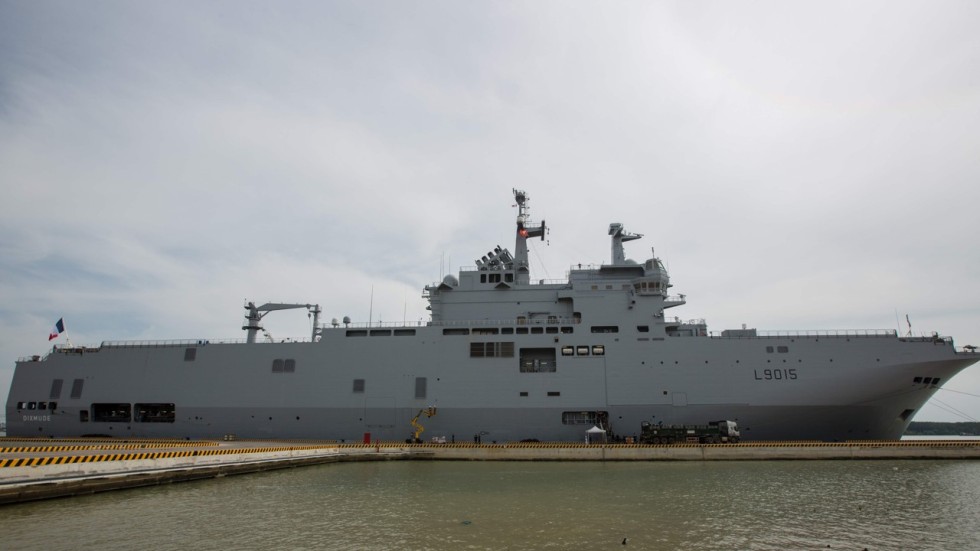SCMP: French military pushes back against Beijing’s SCS claims
France has sent warships through contested waters and will hold air exercises in the area later this year
Original Article on SCMP: On the water and in the air, French military pushes back against Beijing’s South China Sea claims, by AFP.

The French assault ship Dixmude sailed through the Spratly Islands late last month. Photo: AFP
Cover Photo: WIONews.com
AFP reported that France is increasing their military presence to counter the China’s military build-up in South China Sea.
In late May, the French assault ship Dixmude and a frigate sailed through the disputed Spratly Islands and around a group of reefs that China has turned into islets, pushing back against Beijing’s claim to own most of the resource-rich South China Sea.
“Our patrol involved passing close to these islets to obtain intelligence with all the sensors it is possible to use in international waters,” the Dixmude’s commanding officer, Jean Porcher, said.
Writing in The Wall Street Journal, a researcher from the Hudson Institute think tank who was on board, said “several Chinese frigates and corvettes” tailed the French vessels.
In our opinion, such steps by major military powers around the world are extremely important, in the light of increasingly aggressive actions and decisions taken by the Chinese.
Trump’s United States reversed Obama’s inaction with active challenge against China’s claim. The American leadership on this issue also inspired other powers around the world, including United Kingdom and France to participate in this “denial of legitimacy” against China.
But France, which along with Britain is the only European nation to regularly send its navy into the region, has also waded into the dispute, sending its ships into the South China Sea three to five times a year.
In August, the air force will stage its biggest-ever exercises in Southeast Asia as part of a strategy to mark France’s presence in a region that is home to 1.5 million French citizens in the country’s overseas territories.
Three Rafale fighter jets, one A400M troop transporter and a C135 refuelling tanker will fly from Australia to India, with several stops along the way.
The sea and air operations follow a visit by French President Emmanuel Macron last month to Australia, where he spoke of the need to protect the Indo-Pacific region from “hegemony” – a veiled reference to Beijing’s growing might.
In the article, it is suggested that France under Macron will not be bowing to Chinese pressure, and intends to project France as a major power in the new era.
Macron appeared to be “realistically assessing the growing Chinese challenge”, said Jonas Parello-Plesner, a researcher from the US-based Hudson Institute who was an observer on the recent French navy voyage.
“This is a welcome change from his predecessors, who were enthralled by the business and investment opportunities in China,” he wrote in The Wall Street Journal.
But France had already began to push back against China’s expansionism before Macron took power.
Since 2014, the navy has sailed regularly through the South China Sea as part of its stated bid to uphold a rules-based maritime order.
In 2016, then French defence minister Jean-Yves Le Drian (now the foreign minister) called on other European navies to develop a regular and visible presence in the South China Sea.
Besides protecting navigation, France has cited the need to defend the interests of its citizens scattered across five French territories in the Pacific, including New Caledonia and French Polynesia.
This idea that France wants to regain its position as a major power is echoed as below:
Valerie Niquet, an expert on the Asia-Pacific region at the Foundation for Strategic Research in Paris, said France’s growing assertiveness showed the US was no longer the only Western power “getting involved in the area”.
“Faced with China the US obviously plays the main deterrent role, but it’s not pointless or trivial for a power like France, a permanent member of the [UN] Security Council, to take a firm, principled position and carry out concrete actions,” she said, predicting that it would “marginalise China’s position a little bit more”.
But it could very well be a branding and marketing exercise, due to the increasingly competitive market in military hardware. The buyer countries is believed to want to see France taking the lead in using these weapons – as a demonstration of confidence.
Analysts point to another factor underpinning France’s growing activism in the Indo-Pacific region: the need to show buyers of French arms that Paris has their back.
In 2016, India agreed buy 36 Rafale fighter jets and Australia signed a deal worth A$50 billion (US$37 billion) for 12 next-generation French submarines.
“That is also doubtlessly pushing France to be a lot firmer on subjects that, up until recently, were broached with great care,” Niquet said.
Original Article on SCMP: On the water and in the air, French military pushes back against Beijing’s South China Sea claims, by AFP.

